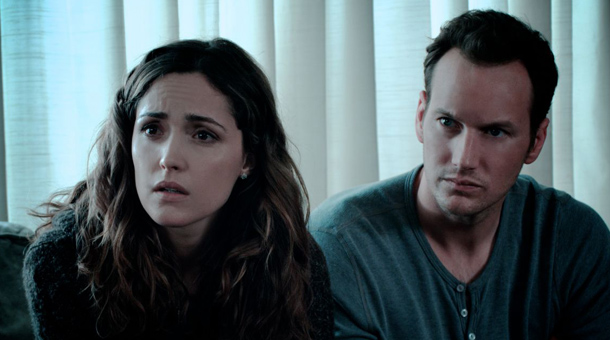Culture
The Bloody Truth: “Insidious”

Every week in The Bloody Truth, Calhoun Kersten digs deeper into the endless back catalog of the horror subgenre.
It’s hard to make a solid horror film these days. Sure, they’re cheap to produce and they’re pretty much guaranteed box office returns, but now more than ever there seems to be a constant struggle between the corporate aspects of Hollywood and the artistic intentions of the cast and crew. Or at least that’s what seems to be part of the problem with the breakthrough directorial effort Insidious, from the creators of the Saw franchise, James Wan and Leigh Whannell. It’s not for a lack of trying, but rather trying to cram a little too much that makes Insidious falter when it had such potential.
Honestly, one of the biggest issues with the film is an issue of casting. Patrick Wilson, who is normally a truly talented actor, is so one-note for the majority of the film that when they attempt to give him any depth or character development, it seems so foreign that I found myself wanting the rigid and formulaic man I’d seen for the first half of the movie. Even Rose Byrne, who has proven herself more than capable of tackling both dramatic roles and comedic ones, comes off as all wrong here. Maybe it’s just my familiarity with her work or my unabashed love of the roles she chooses, but all through Insidious I couldn’t remove the fact that I was watching Rose Byrne onscreen. As Ellen Parsons in Damages, she completely sold me on it. Even in Bridesmaids, she disappeared into the role. Something about the casting of Rose Byrne as a frumpy hausfrau just doesn’t ring true. Sure, she sells the moments of horror, but as a character there was a lot to be desired.
The story itself couldn’t have allowed the actors to do too much, though, so it hardly seems fair to blame them. It starts off strong, if a little generic and certainly formulaic, but these formulas have become tried and true for a reason. It’s when Insidious tries to break out on its own that it clearly loses its footing and begins to falter. When the movie finds itself dealing with the more fantastical elements, it shatters the suspension of disbelief that was first established with the movie. There are plenty of people who have debated the existence of ghosts and demons, but whether you believe in them or not, it is a common understanding going into the movie that those types of scares are to be expected. It’s difficult to say if there was anything in the movie that could have prepared me for the third act of the film. It just seems so conveniently outlandish that it’s difficult to give it any real credibility. It goes from something of a horror movie into a charlatan act to see how much money director Wan can fleece out of his unassuming audience. Up until the film’s resolution, Insidious may have issues of character development, but it is difficult to deny its strengths as a horror movie.
When Insidious knows how to play its scares, the movie can be disarmingly charming and incredibly effective with its scares. One of the things that is certainly unique about the way that it scares is its acknowledgement and acceptance of the horror movies that have come before it. A number of the scares stem from the audience playing the expectation game. We all know what is going to happen, it’s just a matter of making us wait for it. Insidious has fun with these moments and uses the score to create a sense of urgency in every little movement. Even in other instances, the movie feels very old-fashioned in the way that it unfolds. Many of the scares are tactics that you’ll find employed in classics such as the 1963 Robert Wise classic The Haunting or even the George C. Scott film The Changeling. When it builds itself up on old school scares, Insidious is at its finest.
Unfortunately, the film seems to feel the need to please everyone. Old-school horror fans will be pleased with the buildup of the tale, despite the use of archetypal and downright shallow characters. But in its third act, Insidious feels the need to branch out on its own and make a name for itself in the new realm of horror. This is a world that prides itself on the importance of visuals and almost ends up over-explaining and over-illustrating the elements of horror. What we’re left with is a staggeringly divisive movie, one that offers something old and something new, but never seems to commit to either idea enough to truly sell it.